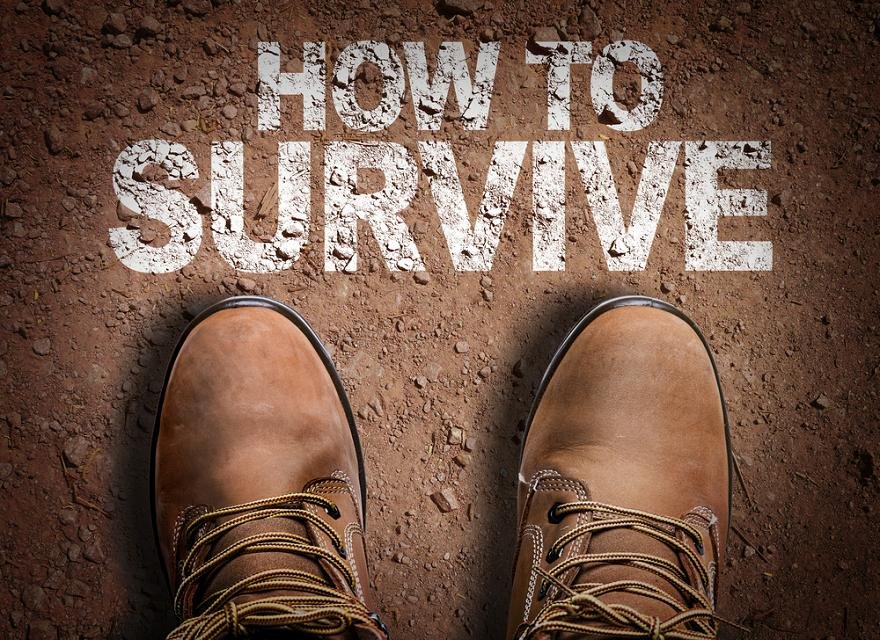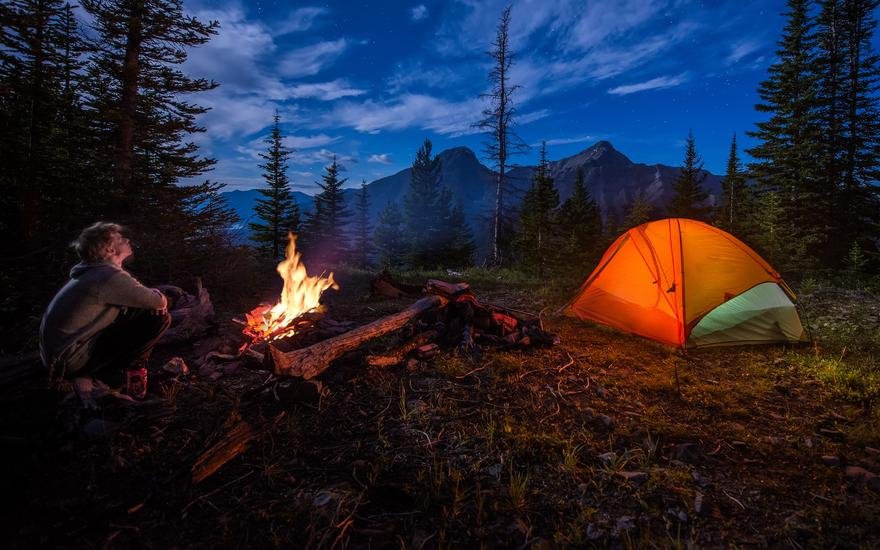Wilderness survival should be taught in schools.
Why? Because your skills of survival, at the mercy of Mother Nature, could be the difference between life and death.
You never know when you’ll find yourself in such a situation. Maybe you go out hiking or trekking and get separated from your group; maybe your car breaks down in the middle of nowhere, you get the idea.
Keeping this in mind, we’ve made this guide listing out seven useful tips for surviving in the wild. While it isn’t all you need to survive, it’s a great starting point.
So let’s get started!

1. Attitude
Before anything else, get your head straight. A defeatist attitude will negate the best of efforts, so affirm and reaffirm to yourself that you will survive.
At no point should you give up, because a mind that has given up has no chance of survival. Besides, the situation probably won’t be as hopeless as it will seem, because, as you’ll read in this list, the circumstances will likely be leaning in favor of survival!
If you begin to feel lonely, low, anxious, nervous, etc., take a few deep breaths and remind yourself that you will make it out, alive and in one piece!
2. Inventory
Taking inventory is one of the most important tasks you can perform. It is unlikely that you’ll find yourself stranded in a hostile environment without any sort of equipment, gear or resources, so lay them out and see what you have.
Once you’ve taken stock of what you have, make a note of their potential uses, and also whether you have enough for other essential needs. Ask yourself questions like:
Do I have something to catch/make/cook food with?
Can I start a fire with what I have?
Do I have something for shelter?
Do I have a communication device?
This will help you organize your things as well as your thoughts and will also help you plan, ration and decide what is to be procured or built. This guide offers more info about what you need if stuck in the wild.
3. Shelter

We’re scraping the barrel of Maslow’s Need Hierarchy, but, what else do you expect to do in a survival situation? The first thing you need to do is protect yourself from the elements.
Build a lean-to, if possible, and make it as small as it can get. Look for leaves or pine needles for bedding and insulation. Thatch or wood is excellent for overhead insulation, provided you have enough of those.
Try to build some blocked entrance or a ‘door’ for your shelter, if possible. This will protect you against wild animals and also from storms and blizzards, should they happen.
4. Water
The next step is to find water.

If it’s raining, you’re in luck. Find or build the largest container possible and place it so that rain drops into it, unhindered. If you’re near a source of running water, such as a flowing river, it’s best to boil and drink the water. But if you have no means to boil it, and if it’s an emergency, you may drink the water without boiling.
If you have access to none of these, try finding water either by melting snow or by digging a deep, seep hole near plants such as willow or cottonwood, as these indicate the presence of water nearby.
5. Fire
It is essential to get a fire started if you are to hope to survive for a fair while. Fire is vital as it helps keep animals at bay, allows you to boil water and cook food, and provides warmth and heat.

The process becomes easy if you have a lighter or waterproof matches with you. If you don’t, try to find a magnesium fire starter (the filings can be rubbed against a knife to start a fire).
If everything fails, try extracting a battery from a car and connect the terminals to some steel wool. If the battery has sufficient voltage, the steel wool should ignite to start a fire.
Once you manage to get a fire started, keep it burning with small sticks of wood, eventually moving up to larger sticks. If you can’t find wood, look for leaves, thistle, milkweed, paper, etc. to use as fuel.
6. Using a gun with a scope
If you’re caught in the wilderness with a gun of some sort or need something to look into the distance, a long-range scope is indispensable.
When stuck in the wilderness, finding food is essential, and hunting game using a rifle is the surest and safest way of keeping yourself alive. While the legality of this is subject to poaching legislation of the area, we believe keeping yourself alive is of greater than keeping a boar alive.
Even if you’re not planning on hunting, a scope comes in handy for spotting possible shelter sites, checking the relief, finding sources of water, finding other people, etc.
7. S.O.S.
Learning Morse code is something that should be taught in schools, as well, as it’s straightforward to learn and could be instrumental to your survival.

If you have a flare, try firing it at night.
If you know Morse code, use whatever you have (torch, phone flash, etc.) to flash it in case you see a plane or search party. The Morse for ‘S.O.S.’ is three dots, followed by three dashes and again three dots.
If you don’t know Morse, try setting up stones so that they read ‘HELP’ from directly above. If possible, you can also try making a large fire (the smoke and flames will direct search parties to your location).
Conclusion
Surviving in the wild can be a daunting prospect to some, but with the right attitude, skillset and a little equipment, you can increase your chances manifold. This guide presents some useful tips to help you escape the scourge of Mother Nature unharmed.
Stay safe!
